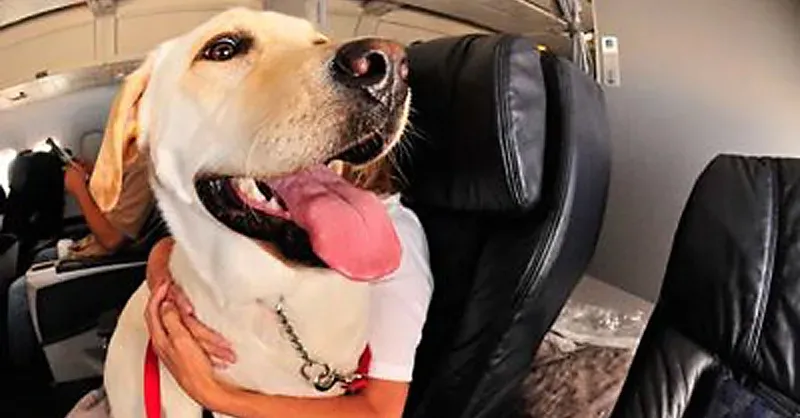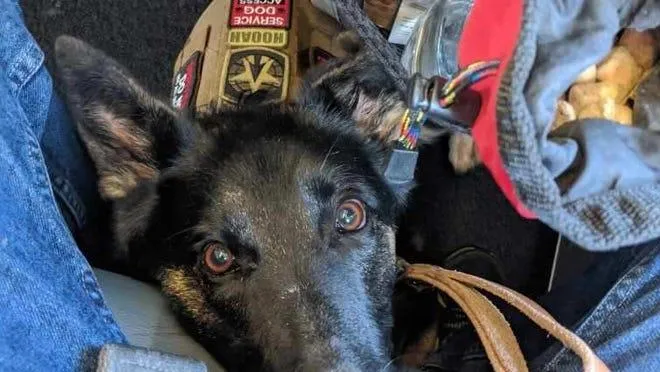A Comprehensive Guide to Flying With Your Dog in Cabin
If you’re looking to take your furry companion along on an upcoming flight, you may be wondering can I fly with my dog in cabin? The short answer is – it depends. In this guide, I’ll cover the key factors airlines consider and steps you need to take to increase your chances of getting approval.
Size Requirements
- Most airlines only allow dogs small enough to fit under the seat in front of you without blocking the aisle or escape path.
- Generally, this means the pet must be able to sit on your lap or fit inside a carrier that is no more than 18 inches high by 17 inches wide by 8.5 inches deep.
From my experience traveling with smaller dogs, these size restrictions can be tight. Be sure to measure your pet’s carrier well in advance to avoid surprises at the airport. It’s also a good idea to take your dog’s carrier with you when shopping for a new carry-on bag to make sure everything fits together properly.
Breed Restrictions
Some breeds considered “dangerous” or unusually large are banned from the cabin on most airlines. This typically includes dogs like Pit Bulls, Rottweilers, Akitas, Chow Chows, Great Danes and Mastiffs. However, policies can vary between carriers so be sure to verify the rules for your specific airline. Even friendly “restricted” breeds may only be permitted as cargo instead of in the main cabin.
Advance Planning is Key
No matter the size or breed, flying with your dog in cabin requires pre-approval from the airline. Most carriers require pets to be booked at least 2-3 days before departure. Some suggest a full week of lead time for busy travel periods. Securing a “confirmed” spot is vital since only a limited number of pets can fly in the main cabin each flight for safety reasons.
Speaking from experience trying to get last-minute bookings, advance planning is crucial. I’ve faced situations where all the pet spots filled up weeks in advance, leaving no options other than costly cargo transport. Booking early gives you the best shot at an approved cabin spot and avoids unnecessary stress.

Health Certification is Mandatory
All airlines require proof that your dog is fit to fly in the form of a health certificate from your vet. The certificate is typically only valid for a certain number of days (often 10-30 days) from the date of issue.
Certificates affirm that your pet has been examined, is current on vaccinations like rabies, and displays no signs of infectious disease or stress-related illnesses. Many vets book up quickly, so schedule the appointment a month before your trip if possible. I’d also suggest getting an extra health certificate in case of unexpected travel changes or delays.
Proper Travel Gear is a Must
In addition to an airline-approved carrier, you’ll need other essentials to keep your pooch safe and comfortable during the journey:
- Collar, leash, and ID tags with your contact information
- Ample food, water, and bowls (follow airline limits on amounts)
- Pee pads, poop bags, disinfecting wipes for cleaning accidents
- Calming treats, if your dog gets anxious traveling
- Familiar toys or blankets to help your pup relax
From experience, I’d emphasize having extra supplies since delays are always possible. It’s no fun if you (or your dog!) run out of necessary items mid-journey. A few extra pee pads or bowls of food provide much-needed security.
Practice Makes Perfect
Even for friendly dogs, flying can induce stress so it’s wise to do test runs well before the big trip. Basically, you want your pup familiar and comfortable with its carrier, collar/leash, and airline environment.

Here’s a tip – pretend it’s “airport day” periodically. Load your dog into its carrier, add noise from a white noise app, then give treats and praise for calm behavior. Take short practice trips to pet-friendly stores too. By the time your actual flight arrives, your pooch will basically think it’s just another walk in the park!
Expect Extra Screening
While traveling with pets, prepare for more TSA screening than usual. Officers may need to visually inspect carriers or run additional bag searches for safety. Kind of a bummer, but it’s all part of keeping flights safe for everyone.
Stay positive, be respectful of officers, and try distracting your pup with treats and praise if it seems stressed during checks. From my experience, TSA folks are usually super nice about pets if owners follow guidelines. The screening literally takes seconds once they see your paperwork is in order.
Consider Travel Insurance
No journey is fail-proof, so it’s smart to get some type of pet travel insurance in case of delays, lost luggage, or medical emergencies en route. Policies vary in coverage amounts and inclusions, so read the fine print carefully.
Speaking from past issues, travel mishaps unpredictably happen – like the time my sister’s dog got delayed a full day due to a diverted flight. Thankfully insurance covered unexpected boarding costs. It basically eased like 90% of the stress knowing furballs were cared for no matter what. Totally worth like $30-50 for major peace of mind if you ask me!

Have Fun and Enjoy the Bonding Time!
With a bit of preparation, flying with dogs in the cabin is totally doable. Yes, there’s more planning involved versus leaving pets at home. But honestly, the quality time with your pupgo makes it all worthwhile in my opinion. My best memories involve bonding with Critter during lazily cruising at 30,000 feet. We’d take long walks after touchdown too tired to even think about security lines, if you know what I mean.
At the end of the day, following airline rules and using common sense keeps everyone safe. Kind of amazing to think mans’ best friends can accompany us virtually anywhere now. Hopefully this guide gave you the intel needed to figure out if cabin travel is right for your special pup. Let me know if any other questions come up!
Requirements for Flying with Your Dog in Cabin
| Airline | Dog Breed | Weight Limit | Crate Requirement | Fees |
|---|---|---|---|---|
| Delta | Any breed | 20 lbs or under | Soft-sided carrier under the seat | $125 each way |
| American | Any breed | 20 lbs or under | Hard-sided carrier under the seat | $125 each way |
| United | Any breed | 20 lbs or under | Hard-sided carrier under the seat | $125 each way |
| Southwest | Any breed | 20 lbs or under | Hard-sided carrier under the seat | No pet fees |
FAQ
-
Can I fly with my dog in the cabin?
Yes, generally small dogs and cats are allowed to fly in the cabin with you as carry-on luggage. However, most airlines have restrictions on the size and breed of pets that can travel in the cabin. Make sure to check the specific policies of your airline well in advance.
-
What are the size restrictions for cabin pets?
Most airlines only allow pets that can fit comfortably under the seat in front without interfering with the passenger’s legroom. The maximum size is usually around 10-15 pounds and around 20 inches in height. Basically, if your furry friend can fit in a standard airline-approved pet carrier, they will probably be OK in the cabin.
-
Are there any breed restrictions?
Certain brachycephalic (flat-faced) breeds like Persian cats, pugs and bulldogs are often prohibited in the cabin due to health risks associated with lower oxygen levels at high altitudes. Airlines may also restrict powerful breeds like pit bulls or dogs showing aggressive tendencies. It’s best to check the carrier’s website or app for a full list of breed exceptions.

-
How do I prepare my pet for air travel?
Getting your pet accustomed to their carrier well before the flight is key. Feed them in it and reward them with treats to build positive associations. Consider calming aids like pheromone sprays and CBD if they get stressed easily. Make sure pets are properly identified with tags and vaccinated per destination requirements too. On the day, limit food/water intake to reduce bathroom breaks mid-flight.
-
Is it safer to fly my pet cargo or cabin?
While flying in the cabin allows you to comfort your pet, cargo is less stressful without the noise and crowded conditions on board passenger planes. However, travelling in cargo does present higher risks like extreme temperatures if flights are delayed. Doing short routes during good weather and using an IATA-certified handler ups their chances of a safe trip either way. Ultimately, it depends on your pet’s personality.
-
How much does it cost to bring a pet on a flight?
Cabin pet fares cost $100-250 each way depending on the carrier. Fees are waived for service animals. Cargo flights cost more – usually $200-500 each way due to special handling. You’ll also need a carrier, paperwork, and may face hotel pet charges. So it can basically set you back $500-1000 round trip to fly with pets. Is it worth it compared to boarding? That’s for you to decide!
